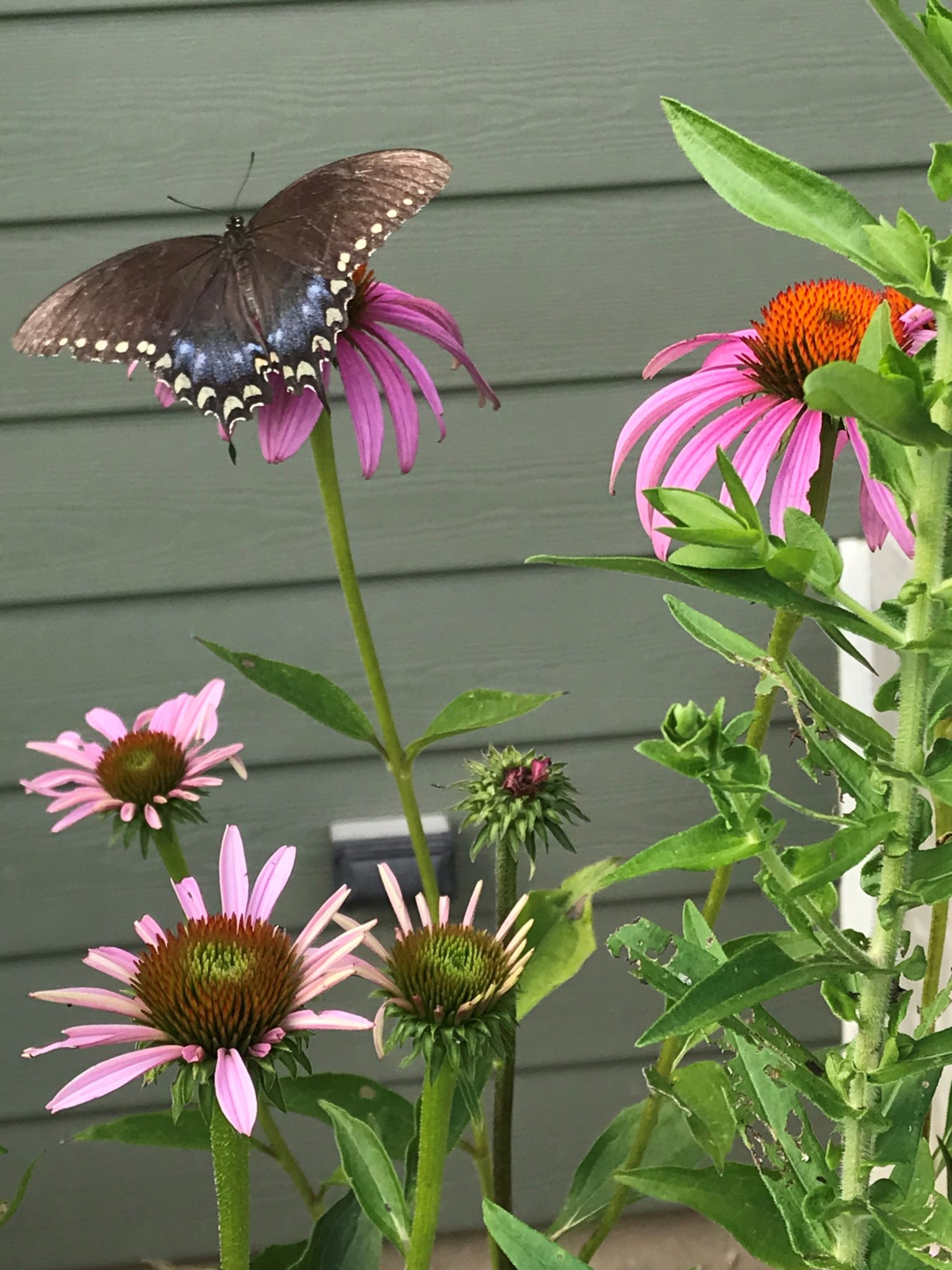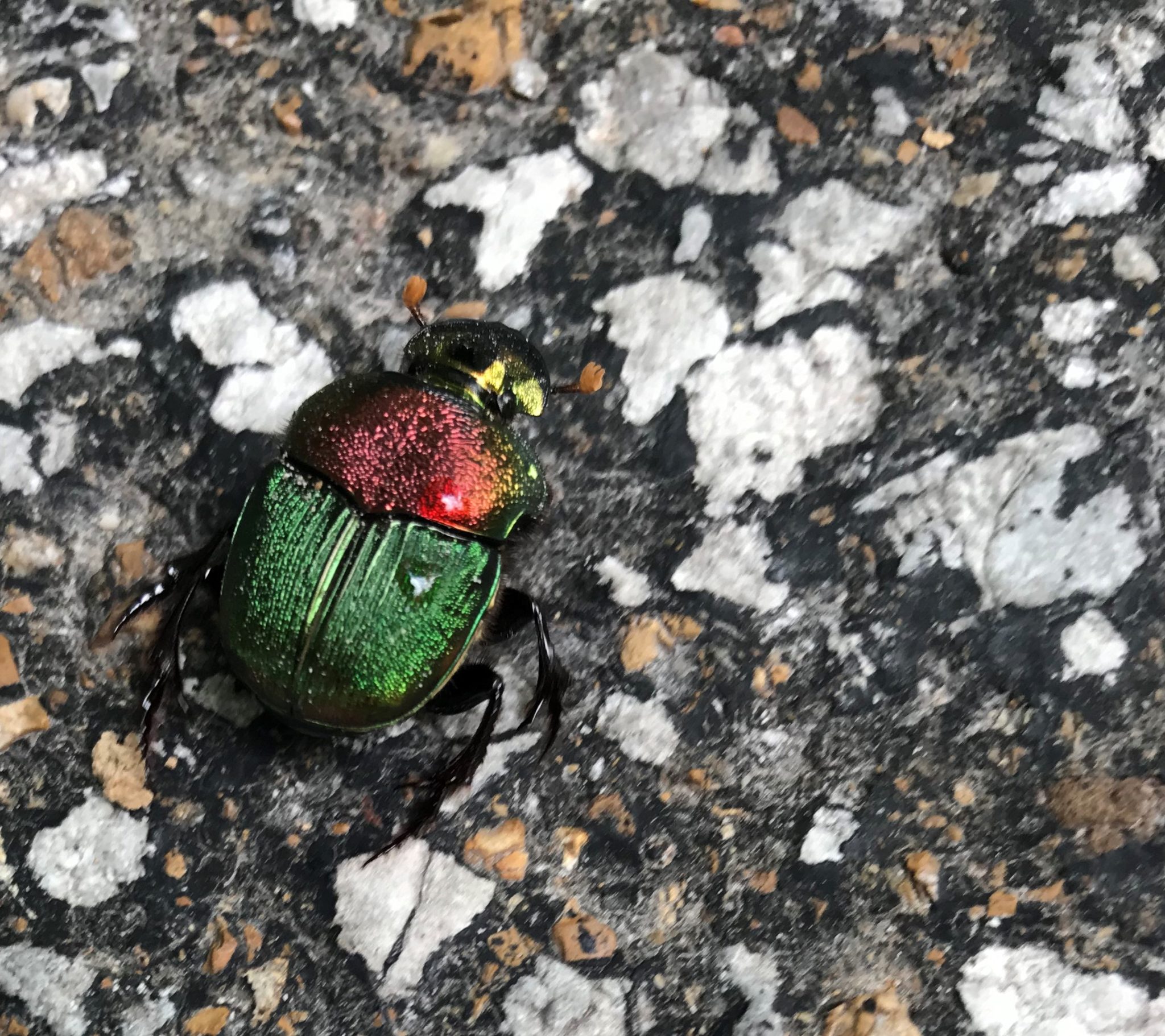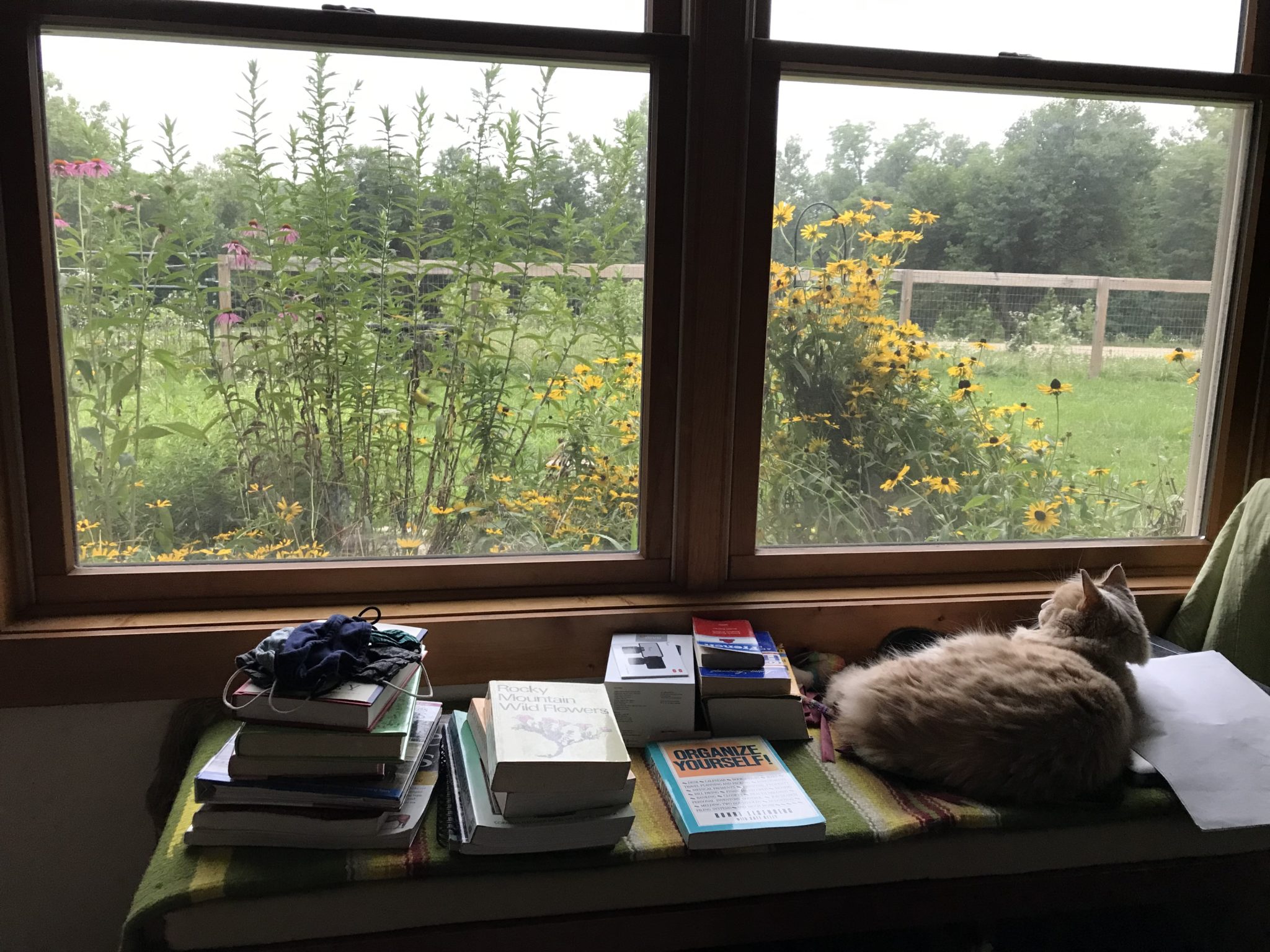
August is not usually considered a great time to be outside in Missouri. The weather is hot and humid. Except for a few wildflowers blooming many plants seem to give up this time of year and wait for cooler weather — not a bad strategy if you ask me. But this August, I’ve noticed a couple bright spots in my outside observations that are worth sharing
Just this morning I saw several species of large, vibrant butterflies on my morning dog walk. The Monarch butterflies are suddenly plentiful, floating around on their orange and black stained-glass wings. There were also Tiger Swallowtail (Papilio glaucus), Parsnip Swallowtail (Papilio polyxenes) and Giant Swallowtail (Papilio cresphontes) and many smaller species that I don’t know at a glance. Other insect life is plentiful as well. I frequently see a variety of wasps collecting spiders and other quarry as food for their larvae. An iridescent Rainbow Beetle (Phanaenus vindex), a type of dung beetle, lumbered across the road. The next generation of carpenter bees are emerging and buzzing around, as are many other species of bees (I need to learn more of these). A hawk moth, which imitates hummingbirds and forages during the day, darted between and hovered over flowers. My short walk up the road with my dogs was full of bright surprises.

Despite or maybe because of the large numbers of species and individuals, identifying invertebrates can be challenging — the small size is also difficult. Often an online query is the quickest way to identify insect. Even when I start online, I enjoy following up by consulting books. I can confirm my find and learn more details about the species, genus or family. This way I slowly build my knowledge of the world around me. I may have to look up a species more than once before I remember it reliably, but I enjoy the inquiry and exploration as much as the aggregate knowledge.
We have a variety of guides to identifying insects, including my favorite “Tracks and Signs of Insects and Other Invertebrates,” as well as memoir about following the monarch migration by bicycle, and “Summer World: A Season of Bounty” a book of essays by my favorite naturalist author, Bernd Heinrich. For more books, check out my list, “Enjoying Butterflies and Other Invertebrates.”
Birds are another late summer bright spot for me. After the initial buzz and bustle of spring migration and courtship, our summer resident birds get very quiet. For the most part they are busily caring for young and prefer not to be seen. Many birds raise multiple clutches, so I you may see them ‘re-emerge’ throughout the summer as their young are fledged and the families troop around together while the juvenile birds learn the ropes of survival. These bursts of increased activity are staggered and fleeting, and the parents quickly return to nesting activities.

However, toward the end of summer a wider variety of birdsongs fill the air every day. Suddenly I see many more small bodies darting around between leaves and branches. While this isn’t quite the time to see the exotic migratory birds as they pass through on their way south, it can be a fun time to actually watch birds and their interactions with each other.
When the young birds physically leave the nest they aren’t ready to survive on their own. Up until now, they’ve only eaten food from their parent’s beaks, and it takes them time to learn to forage on their own — not to mention learning to fly reliably. They learn fast, but there is a brief window when we can observe harried parents rushing to and fro collecting insects and carrying them to offspring stationed in the vicinity. The newly fledged birds are easily identified by their behavior and appearance. They beg by fluttering their wings close to their sides, holding wide mouths agape and peeping loudly. Often little bits of baby down still poke out from the flight feathers, giving them a scruffy, comical appearance. They sometimes seem sullen or sleepy and other times demanding. I love watching their small dramas. Whether the young birds are demanding more food from their busy parents or making their first clumsy attempts to catch a grasshopper, they never fail to lift my spirits.
The traditional field guide for identifying birds is not the only way to learn more about this group of animals — although you’ll find plenty of those at the library. “How to Know the Birds” by Ted Floyd is the one I’m currently the most excited about. The first pages described the delights of watching a family of bushtits, much better than I have done above. This is an author wishing to share the joys of watching birds. “Birdology,” by Sy Montgomery is science writing at its best, illuminating what it is to be a bird from the backyard chicken to tiny hummingbirds learning to fly. If you’d like to watch birds from the comfort of your climate controlled home (as I often do with my cat), now is a great time to start planning your native wildflower garden, sure to attract both birds and invertebrates. Take a look at “Gardening for the Birds.”
For more books to help you enjoy our avian world, check out my list, “Enjoying Birds.”


